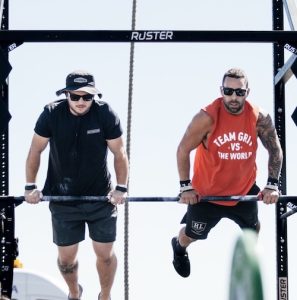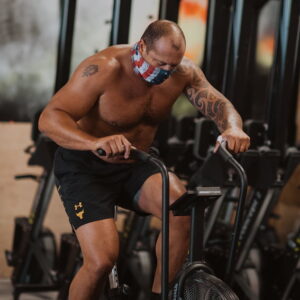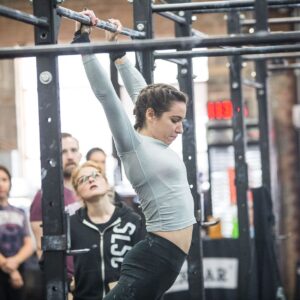We recently received a question about using heart rate in training, so we though it might be useful to record a podcast on the topic.
People often wonder whether they should be tracking their heart rate in training—especially if they have a background in endurance sports like running, cycling, or triathlon.
Should CrossFitters be tracking their heart rate in a similar way? Are heart rate zones applicable to mixed modal training in the same way that they’re applicable to running intervals?
As always, the answer to this question deserves a bit of nuance. While heart rate isn’t useless for CrossFitters, it doesn’t have the same correlation with intensity or rate of perceived exertion as it does for endurance athletes training in one cyclical modality.
Still, heart rate can be a valuable tool for athletes to understand their different “ranges” of intensity, and it can also help us utilize some of the tools developed for endurance athletes as “energy systems accessory work.”
Check out the full conversation below with Jon, Luke, and Todd to hear more about using heart rate for CrossFit athletes.
Listen Here
- iTunes
- Overcast
- Google Podcasts
- mp3
- Or stream here:
- If you’re enjoying the show, why not a leave a review? It makes a difference in terms of other people finding the show.
Show Notes:
- [00:13] What is the value in data tracking for CrossFit athletes? Can we compare the way that endurance athletes in sports like marathon or triathlon track heart rate to the needs of CrossFitters?
- [06:19] What are the challenges of using heart rate in a “mixed” environment (like burpees, pull-ups, and kettlebell swings) vs in a cyclical environment (like running or cycling)?
- [10:10] How do the Legion coaches use heart rate for athletes? What have we seen be helpful for our athletes who do track their heart rates?
- [19:35] Using heart rate to do “Zone 2” training focused on mitochondrial adaptation and building an aerobic engine
- [29:38] Overly analytical athletes can have a tendency to “take everything apart” and focus too much on things like heart rate numbers, building an aerobic base, and doing their accessory work—at the expense of practicing their sport. Avoid this trap!






